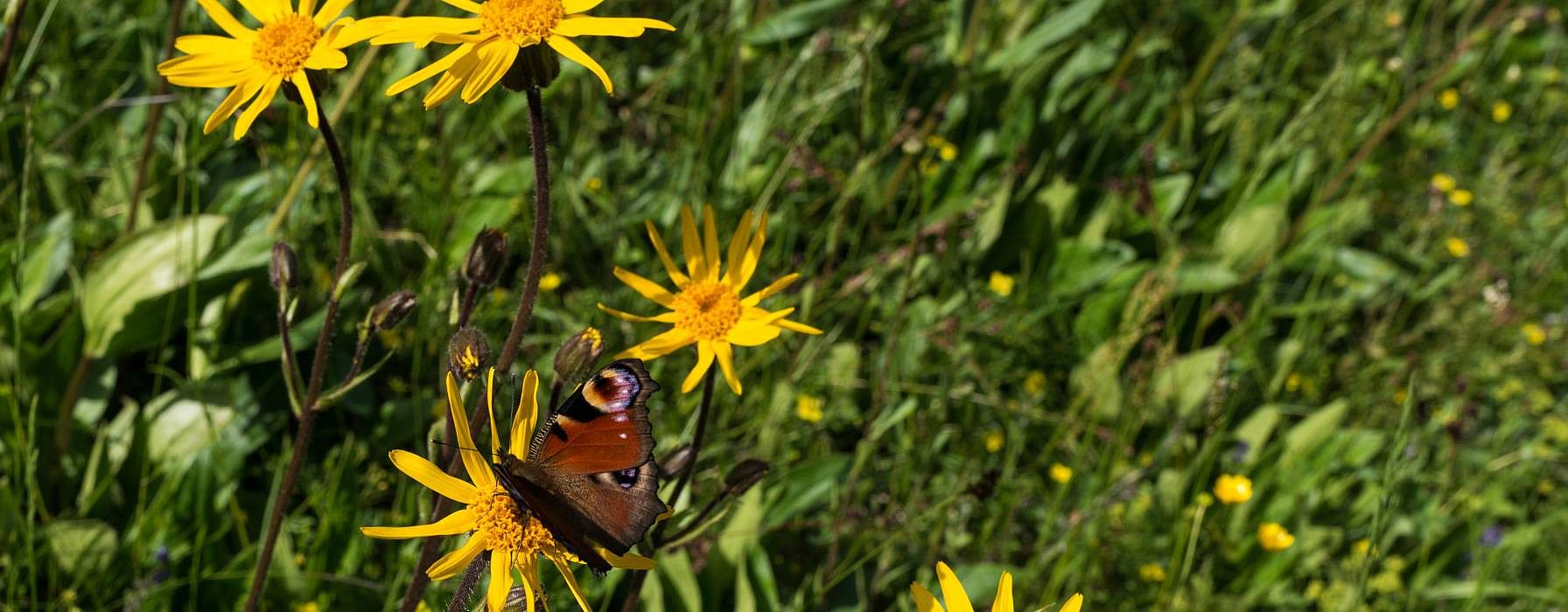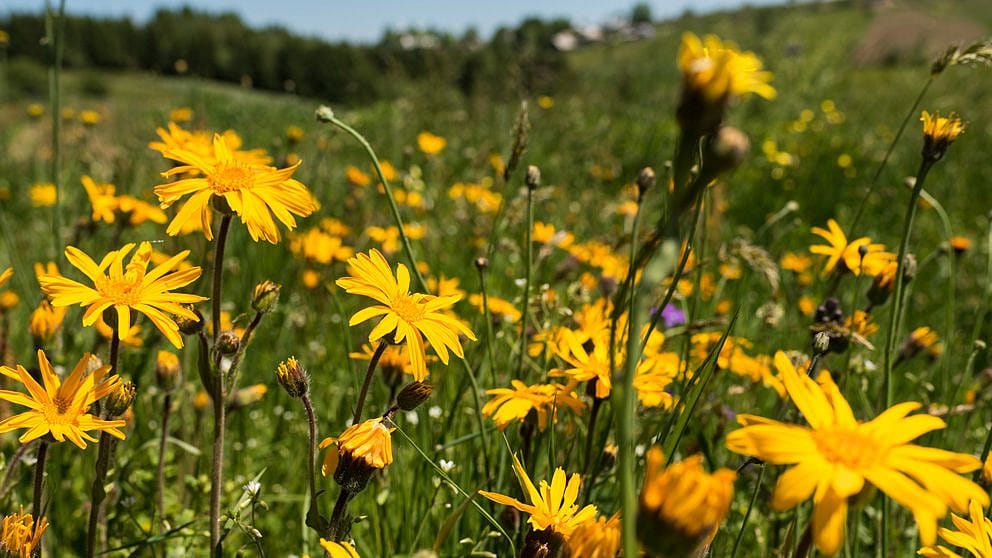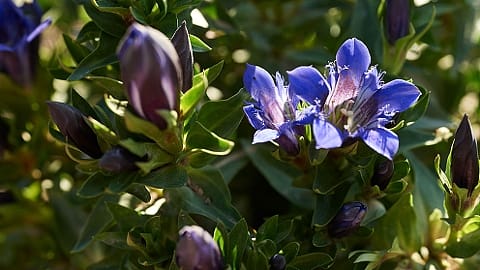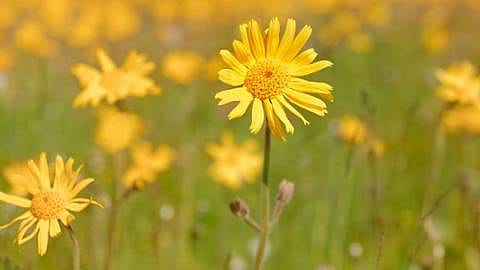Weleda´s sustainable collection of wild plants helps people and nature
Arnica: Weleda's Contribution to Biodiversity
When the small medicinal plant arnica blooms, the locals return to their villages in the remote Apuseni Mountains in the Romanian Carpathians. The most important plant in this region blooms with bright yellow flowers and forms green rosettes out of its leaves at ground level: Arnica montana.
Arnica is extremely fickle and only thrives on predominantly natural meadows
Large quantities of wild arnica grow on slopes of the Romanian Carpathians, which include the Apuseni Mountains. But the plant is highly sensitive. If too many cows graze on the meadows or the farmers use chemical fertilisers, the arnica immediately reacts to the changed soil conditions and disappears. If too many trees grow, the plant doesn't get enough light. It is extremely fickle and only thrives on predominantly natural meadows. Although it is possible to cultivate arnica, it is difficult to grow, and to conserve biodiversity and natural conditions in the region, it is essential to gather plants in the wild.
Aside from grass and hay, a meadow alone doesn't produce much for a farmer
But if arnica grows there, the meadow offers an additional source of income and the owner has an incentive to leave it in its original state. Cheap labour and inexpensive raw ingredients should not be the main incentives, but rather sustainable use, fair working conditions and quality. Many people return to the villages to help with the arnica harvest. They spend the summer working on the high pastures, living in simple huts. They have recognized the value of nature.







